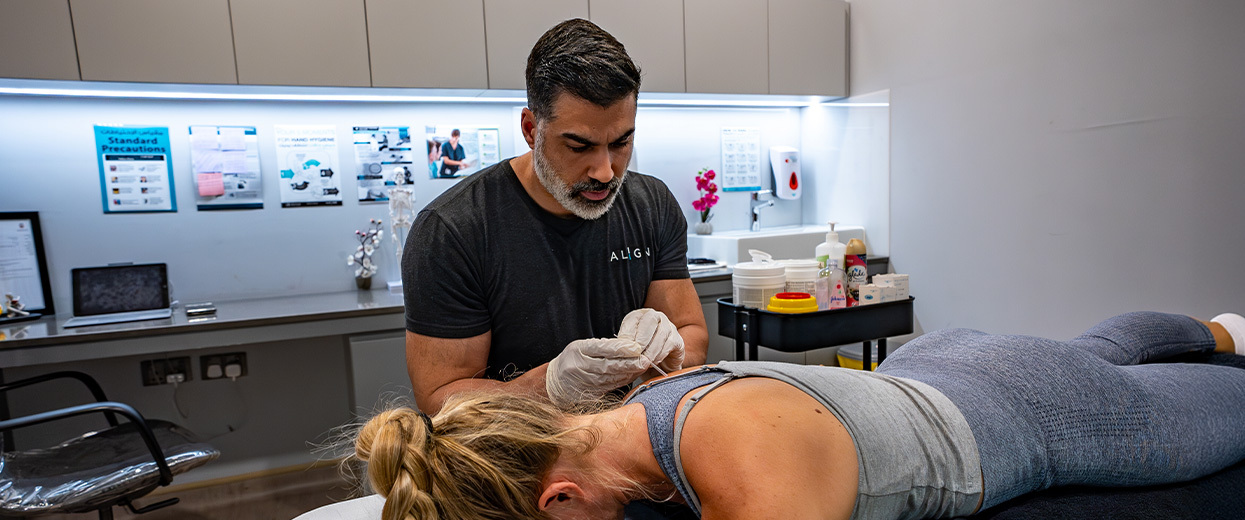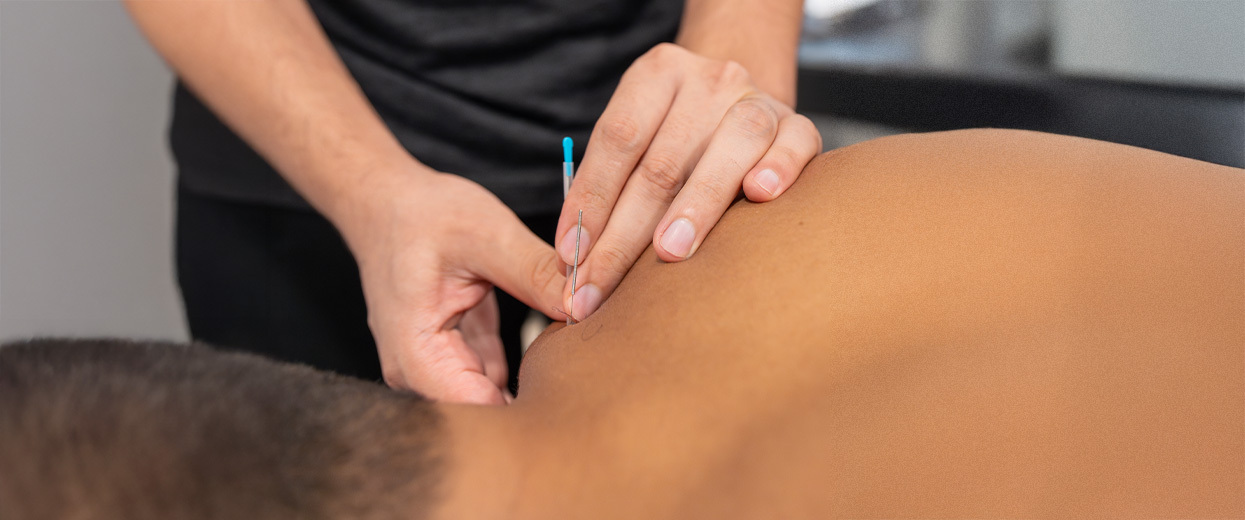Headache and Migraine Relief: Can Dry Needling Help?
Headaches and migraines can be more than just a minor inconvenience; they can interrupt your day, make it difficult to focus, and leave you feeling drained. Many people reach for medication to get temporary relief, but what if there was a therapy that could target the underlying muscle tension contributing to your pain?
One approach that’s gaining attention in recent years is dry needling for pain. This technique has become increasingly popular among people looking for non-invasive relief from headaches, migraines, and other chronic pain conditions.
In this blog, we’ll explore what dry needling is, how it helps relieve headache and migraine symptoms, and whether it can play a role in preventing future episodes. If you’re looking for a natural, targeted treatment, this guide will help you understand if it’s right for you. You can also explore professional dry needling therapy in Abu Dhabi, offered by experts at ALIGN Health who specialize in pain management and rehabilitation.
What Is Dry Needling?
Dry needling is a modern therapeutic technique used by physiotherapists and rehabilitation specialists to relieve muscle pain and tension. It involves the use of very fine, sterile needles that are gently inserted into specific areas of tight or knotted muscles, known as trigger points. Unlike acupuncture, which is rooted in traditional Chinese medicine and focuses on energy flow, dry needling is based on Western anatomy and physiology.
The goal of dry needling is to relax muscle fibers, improve blood flow, and restore normal movement in the affected area. When a needle targets a trigger point, it helps release muscle tension and reduce the sensitivity of the surrounding nerves. This release often leads to a noticeable improvement in movement, reduced pain, and a general sense of relaxation in the treated area.
For individuals who experience frequent headaches or migraines caused by muscle tightness in the neck, shoulders, or upper back, this technique can help reduce the source of pain rather than just masking the symptoms.
How Can Dry Needling Help With Headache and Migraine Relief?
Headaches and migraines can have several causes: stress, poor posture, dehydration, and muscle tension are among the most common. For many people, tension in the neck and shoulder muscles triggers or worsens these episodes. This is where dry needling for pain comes into play.
When muscles such as the upper trapezius, suboccipital, or cervical muscles become overly tight, they can irritate nearby nerves or restrict blood flow to the head. This tension may cause tension-type headaches or even contribute to migraines. By targeting these muscle groups, dry needling helps:
- Release muscle tension:
The fine needles stimulate tight muscles and encourage them to relax. Once the muscle releases, blood circulation improves, which can relieve the pressure contributing to headaches or migraines. - Reduce referred pain:
Trigger points in one part of the body can cause pain in another area, for example, tight muscles in the neck can create pain that radiates to the forehead or temples. Dry needling can deactivate these trigger points and reduce referred pain. - Lower nerve irritation:
Overactive muscles can put pressure on nearby nerves, worsening headaches. Dry needling helps calm these muscles and reduce nerve sensitivity, leading to less frequent or intense headache episodes. - Improve posture and muscle balance:
Poor posture, especially from long hours at a desk, can lead to chronic muscle strain in the upper body. Dry needling promotes better muscle balance, helping to correct posture over time and reduce tension headaches.
For those who experience frequent migraines, addressing muscular tension can often make a significant difference in reducing both the frequency and intensity of attacks.
Is Dry Needling an Effective Prevention for Migraine Episodes or Headaches?
Many patients who seek dry needling for pain report not just relief after a session but also fewer headache or migraine episodes in the weeks that follow. While dry needling is not a guaranteed cure for chronic migraines, it can serve as an effective part of a preventive strategy especially when headaches are linked to muscle tightness or stress.
The effectiveness of dry needling as a preventive measure depends on individual triggers. If your migraines stem from muscle tension, stress, or postural issues, regular dry needling sessions combined with stretching and relaxation exercises can help keep these triggers under control.
Here’s how it may work as a preventive measure:
- Improved circulation: Better blood flow to the muscles of the neck and shoulders helps reduce muscle fatigue and tightness that often precede headache episodes.
- Decreased muscle sensitivity: Over time, repeated needling can desensitize hyperactive trigger points, making muscles less prone to spasm or tension.
- Enhanced stress relief: The therapy often promotes relaxation, which can indirectly help manage stress-induced headaches.
However, it’s important to understand that migraine prevention is rarely about one treatment alone. A holistic plan that includes lifestyle changes, posture correction, hydration, and physiotherapy exercises is often most effective. ALIGN Health takes this integrated approach by combining dry needling with personalized rehabilitation programs to support long-term wellness.
What to Expect During a Dry Needling Session?
If you’ve never tried dry needling before, it’s normal to feel unsure about what to expect. The process is generally quick and minimally uncomfortable. A trained physiotherapist will identify areas of muscle tension and insert fine, sterile needles into specific trigger points. You might feel a mild twitch or dull ache as the muscle releases.
Sessions usually last between 20 to 30 minutes, depending on the severity of the muscle tension. After the session, mild soreness may occur for a day or two, similar to post-workout stiffness. This is a normal response and indicates that the muscles are healing and relaxing.
Most people notice relief after one to three sessions, though those with chronic headaches may require ongoing treatment for lasting results.
Is Dry Needling Safe?
When performed by a qualified physiotherapist, dry needling is considered a safe and effective therapy for pain relief. It’s important to ensure that the practitioner is certified and experienced, as proper technique and hygiene are crucial.
At ALIGN Health, practitioners are trained to use evidence-based approaches and customize treatment according to each patient’s needs. Whether you’re dealing with tension headaches, migraines, or muscle-related pain, their team ensures every procedure is carried out in a safe, comfortable environment.
The Bottom Line
Headaches and migraines can significantly affect daily life, but relief doesn’t always have to come from medication alone. Dry needling for pain offers a promising alternative for those seeking a more natural way to ease muscle tension and reduce headache frequency. By targeting the root cause such as tight, overactive muscles, it helps the body relax and recover from persistent strain.
For long-term benefits, pairing dry needling with physiotherapy, posture correction, and relaxation techniques can create a sustainable path toward pain-free living. If you’re considering trying this therapy, you can explore dry needling therapy in Abu Dhabi at ALIGN Health, where skilled physiotherapists combine modern techniques with personalized care to restore balance and comfort.
This article is intended for informational purposes only and should not be taken as medical advice. Always consult a qualified healthcare professional before starting any new treatment, including dry needling, especially if you have chronic health conditions or underlying medical concerns.


